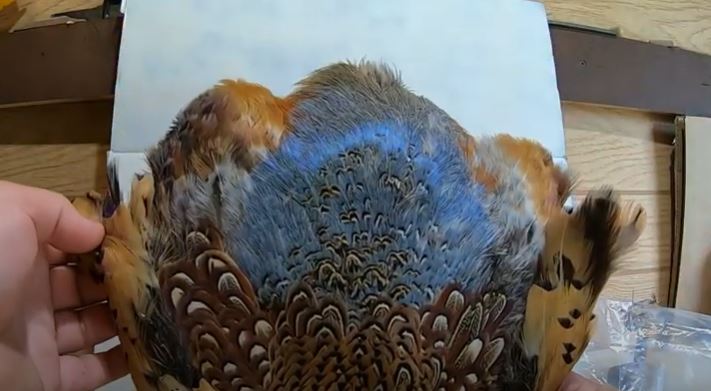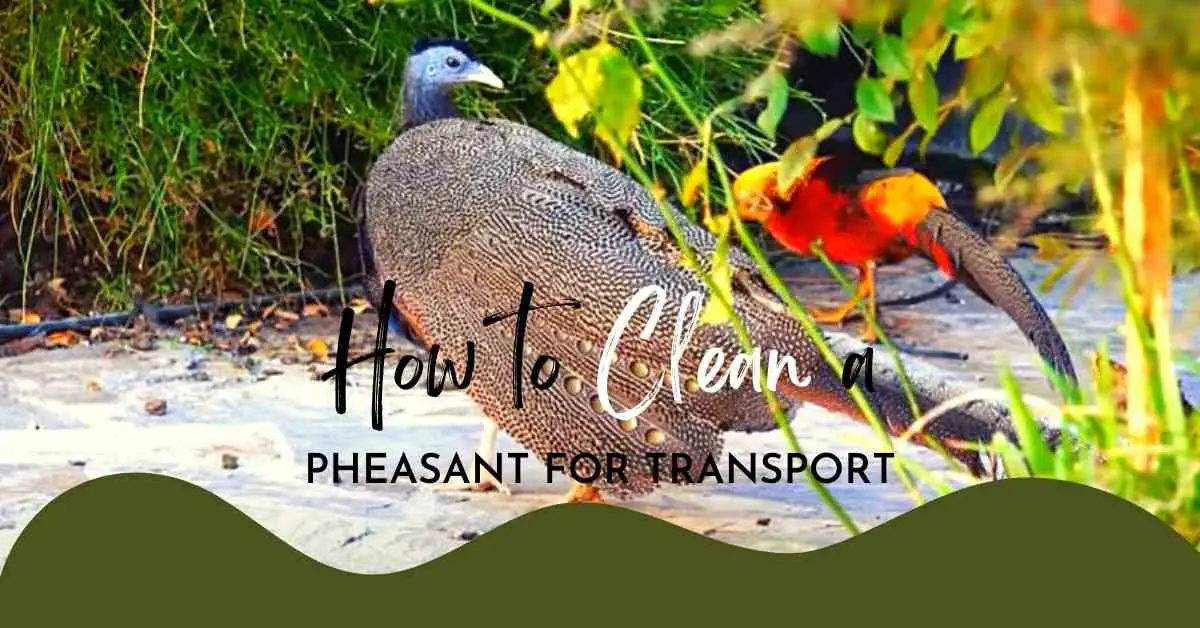How to Clean a Pheasant for Transport
Pheasants are one of the most popular birds for sports and consumption. So, if you are thinking of transporting the pheasant from the hunting grounds, it is proper ethics to clean it quickly to remove the possibility of airborne diseases.
By now, you must be thinking of how to clean a pheasant for transport? Well, it is not a very difficult procedure!
To prepare the pheasant for transportation, you can use one of two common cleaning procedures. One of them, Shear Processing, takes significantly longer than the other, field dressing.
To know all about these two techniques, read on!
How to Clean A Pheasant for Transport?
The death toll caused by food and airborne illness is the highest globally. Therefore, hunters need to handle correctly, process, and dress their hunted birds correctly as soon as possible before any microbes can affect the meat.
You can use several methods to clean the pheasant before transporting it. We have compiled some of these methods that you can use for your benefit:
Method 1: Shear Processing
In the first method, you will be required to use kitchen shears or garden shears for the task. Make sure to sanitize your shears before you start.
Step 1: Preparation
It would help if you prepared the bird first by removing the feathers. You can use kitchen shears to achieve this or even use your hands.
Step 2: Removal

The first thing you need to do is remove the wings using the shears. Then you can move on to remove the neck and finally the two legs. Cut at the knee joint when cutting the leg.
Step 3: Skinning

Remove the skin starting from the top of the breast. Pull the skin towards the tail till the crop is exposed. Finally, remove it along with the bottom.
Step 4: Cutting

Cut the meat into fine sizes and remove all organs and entrails.
Step 5: Cleaning
Clean the meat by washing it in clean cold water. It is then ready for packaging.
Method 2: Field Dressing Process
This is more common than the first method since not everyone can handle shears for dressing and processing the meat. The only tool you will require in this method is a sharp butcher knife.
Step 1: Cleaning Knife
Use clean water, wipes, and alcohol rub to clean the knife that you will be using in the field beforehand. You can use sanitizers to sanitize the knife from bacteria.
Step 2: Skinning
Use incisions at the underside of the breast to make a small hole and then pull the skin and feather off the bird.
Step 3: Remove Organs
Begin with removing the organs, including the intestinal tract, heart, lungs, and liver. Finally, drain the blood from the carcass.
Step 4: Separate and Store
Separate the meat by cutting different parts apart. Store them in separate backs and then place them in an icebox or mini refrigerator that you can bring along in your vehicle.
How Do You Clean A Pheasant Mount?

Pheasant mounts can get dirty very quickly when they are displayed without any protection. In taxidermy, preserving your pheasant mount is equally important as ensuring that the catch doesn’t rot once it has been stuffed.
Below we have listed the step-by-step procedure that you can follow to clean your pheasant mount. It is simple and will take you a few minutes only.
Step 1: Dusting
Use a feather duster or standard duster to dust all the first from the mount. If you haven’t been using the mount for some time, it is natural to collect dust. Make sure to go with the feather or in the same flow of the feathers.
Step 2: Clean the Eye
Soak a small cotton bud in lacquer thinner or Windex. Only take enough so that the bud is wet and not overflowing. Then wipe the mount’s eye till it is wet. The old rust and dirty look disappear as the thinner evaporates, leaving a vibrant and shiny black eye.
How Do You Clean Pheasant Feathers?

If you have managed to pluck all of your feathers, don’t throw them away! Feathers can be mass processed to be put together in several ways later on. So it is essential that you clean the feathers and keep them stored for later usage.
Step 1: Removing Parasites
Place the feathers along with mothballs inside a ziplock bag. Keep the setting for at least 24 hours before going any further. The mothballs are meant to kill any parasitic growth that might have affected the feathers.
Step 2: Sanitize
Use a rubbing alcohol and hydrogen peroxide solution to kill all the germs and bacteria-infested in the feathers. Do this by soaking the feathers in the solution for at least half an hour.
Step 3: Soak in Water
Soak the feathers in a bowl of hot water for a few minutes. Don’t place them for too long since the feather might separate from the quill if you do.
Step 4: Dry
Lay the wet feather quills in a paper towel and rub with a wipe to remove all excess water particles that might collect in the nook and cranny of the feather. The feather should be clean by now.
How Long Can You Wait to Clean A Pheasant?
Well, that actually depends on the species of pheasant that you have hunted. However, you should generally clean the pheasant within 24 hours of killing it.
Additionally, do note that if you have hunted a larger bird, the longer you wait, the greater flavor it will be able to offer. However, do not exceed the 24-hour time limit since the meat will start to rot, and blood worms and parasites will take over after 24 hours of slaughter without any cleaning.
Should You Wash Pheasant Before Cooking?
Well, that actually depends on where exactly you are going to wash the pheasant. You can definitely wash the bird if you consider water at room temperature.
In fact, you are advised to wash the bird beforehand. There are no significant issues with washing on cold water either if we are under the assumption that the pheasant was already processed beforehand.
However, you are advised not to wash the pheasant in hot water. This is because parts of the surface of the meat could get cooked when exposed to heat, which will ruin the final flavor. Besides, it is also disgusting to cook the meat after being partially pre-cooked in hot water.
Can the Same Cleaning Techniques be Applied to Both Pheasant and Turkey Call?
When it comes to cleaning a slate turkey call and a pheasant call, the same techniques may not apply. Pheasant calls are typically made of different materials and have different design features compared to turkey calls. It’s important to use specific cleaning techniques tailored to each type of call to ensure proper maintenance.
Conclusion
Well, by now, you should have more than enough knowledge on how to clean and when to clean the pheasant so that it can be ready for transportation.
Even if you can’t clean the bird as soon as possible, you should still drain the whole blood. You can clean the meat within 24 seconds. However, not draining the blood could give a simulation for parasitic growth.
A last piece of advice- always hunt in moderation and never go for culling for blood sports. It is illegal to hunt birds without the intent of consumption and against a hunter’s moral ethics.

